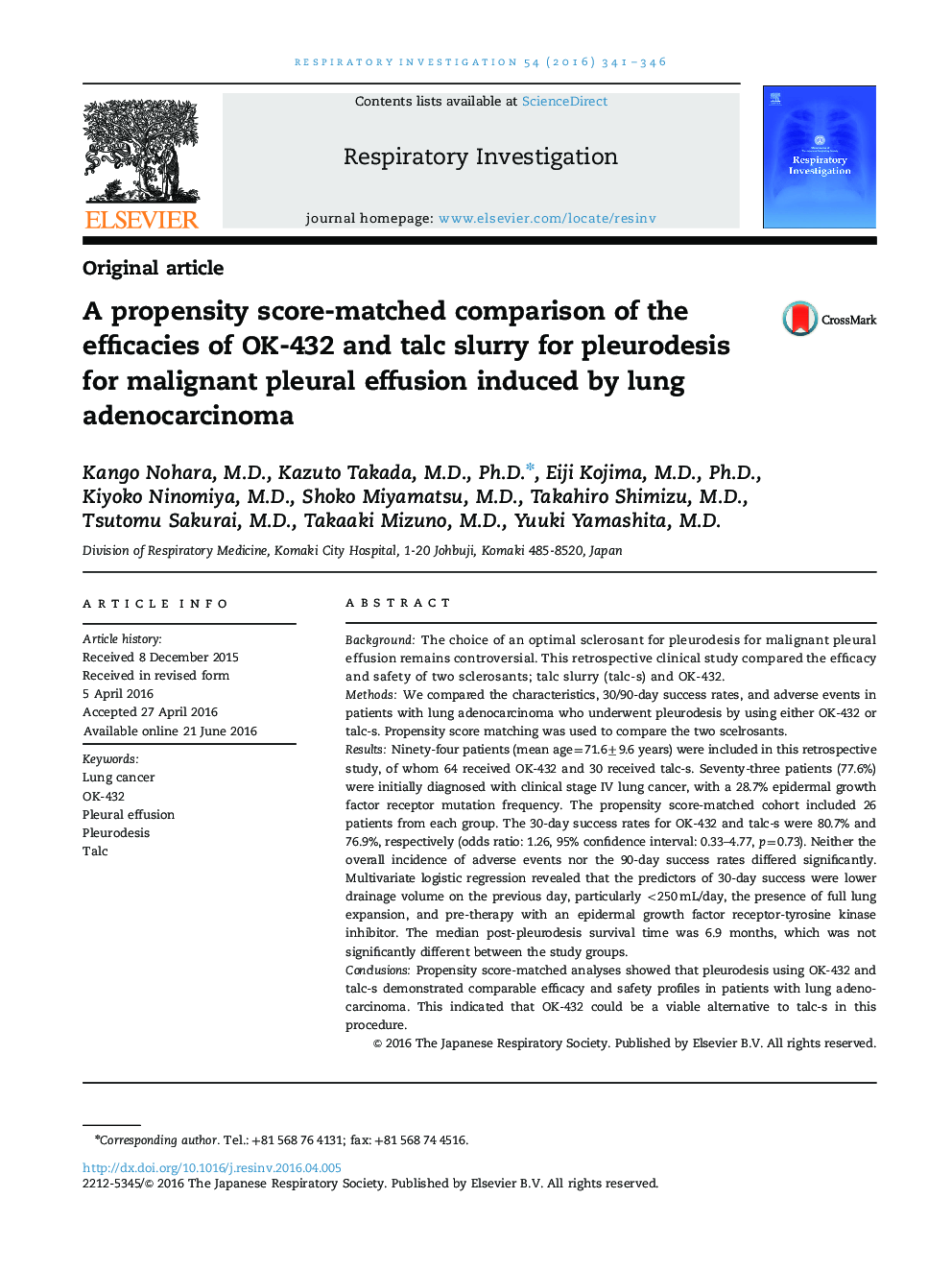| Article ID | Journal | Published Year | Pages | File Type |
|---|---|---|---|---|
| 3418538 | Respiratory Investigation | 2016 | 6 Pages |
BackgroundThe choice of an optimal sclerosant for pleurodesis for malignant pleural effusion remains controversial. This retrospective clinical study compared the efficacy and safety of two sclerosants; talc slurry (talc-s) and OK-432.MethodsWe compared the characteristics, 30/90-day success rates, and adverse events in patients with lung adenocarcinoma who underwent pleurodesis by using either OK-432 or talc-s. Propensity score matching was used to compare the two scelrosants.ResultsNinety-four patients (mean age=71.6±9.6 years) were included in this retrospective study, of whom 64 received OK-432 and 30 received talc-s. Seventy-three patients (77.6%) were initially diagnosed with clinical stage IV lung cancer, with a 28.7% epidermal growth factor receptor mutation frequency. The propensity score-matched cohort included 26 patients from each group. The 30-day success rates for OK-432 and talc-s were 80.7% and 76.9%, respectively (odds ratio: 1.26, 95% confidence interval: 0.33–4.77, p=0.73). Neither the overall incidence of adverse events nor the 90-day success rates differed significantly. Multivariate logistic regression revealed that the predictors of 30-day success were lower drainage volume on the previous day, particularly <250 mL/day, the presence of full lung expansion, and pre-therapy with an epidermal growth factor receptor-tyrosine kinase inhibitor. The median post-pleurodesis survival time was 6.9 months, which was not significantly different between the study groups.ConclusionsPropensity score-matched analyses showed that pleurodesis using OK-432 and talc-s demonstrated comparable efficacy and safety profiles in patients with lung adenocarcinoma. This indicated that OK-432 could be a viable alternative to talc-s in this procedure.
